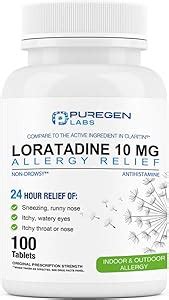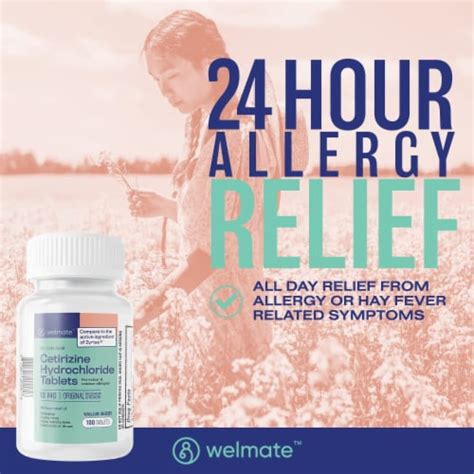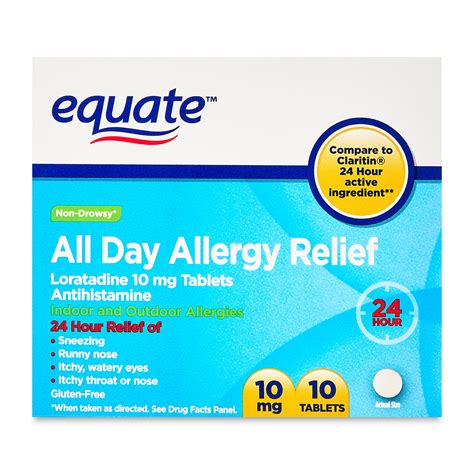Allergies can be a frustrating and debilitating condition for many individuals, causing a range of symptoms from mild discomfort to severe reactions. One of the most common types of allergies is seasonal allergic rhinitis, also known as hay fever, which affects millions of people worldwide. The primary culprit behind this condition is the release of histamine, a chemical produced by the body’s immune system in response to the presence of allergens such as pollen, dust mites, and pet dander. Loratadine 10 mg is a widely used antihistamine medication that provides effective 24-hour relief from allergy symptoms, offering a sense of normalcy and comfort to those affected.
Understanding Allergies and Histamine Release

To comprehend how loratadine works, it’s essential to understand the role of histamine in allergic reactions. When an allergen enters the body, it triggers the release of histamine from mast cells, a type of white blood cell. Histamine then binds to receptors on nearby cells, leading to a cascade of effects, including increased mucus production, swelling, and smooth muscle contraction. These actions result in the typical symptoms of an allergic reaction, such as sneezing, runny nose, congestion, itching, and watery eyes.
Mechanism of Action of Loratadine

Loratadine is a selective histamine H1-receptor antagonist, meaning it specifically targets and blocks the action of histamine at the H1 receptors. By doing so, it prevents the histamine-mediated responses that lead to allergic symptoms. Unlike the first-generation antihistamines, loratadine is less likely to cross the blood-brain barrier, which reduces the risk of sedation and other central nervous system effects. This characteristic makes loratadine a preferred choice for individuals who need to maintain alertness during the day.
Clinical Efficacy of Loratadine
Numerous clinical trials have demonstrated the efficacy of loratadine 10 mg in providing 24-hour relief from symptoms of allergic rhinitis, including sneezing, runny or itchy nose, nasal congestion, and itchy, watery eyes. The medication has been shown to be effective in both adults and children, with a rapid onset of action, typically within one to three hours after administration. Moreover, loratadine’s long duration of action allows for once-daily dosing, enhancing patient compliance and convenience.
Safety and Tolerability Profile
Loratadine is generally well-tolerated, with a safety profile that is comparable to placebo in most studies. The most common adverse events reported with loratadine are headache, somnolence, fatigue, and dry mouth, although these occur at a rate similar to or not significantly different from placebo. Unlike many other antihistamines, loratadine does not significantly impair cognitive function or motor skills, making it suitable for individuals who operate machinery, drive vehicles, or engage in other activities requiring full alertness.
Comparisons with Other Antihistamines

When comparing loratadine with other antihistamines, several factors come into play, including onset and duration of action, potency, sedative effects, and specificity of action. Loratadine’s non-sedating properties and once-daily dosing regimen make it an attractive option for many patients. Additionally, its efficacy in reducing symptoms of allergic rhinitis is comparable to or superior to that of several other second-generation antihistamines.
Practical Applications and Considerations
For individuals considering loratadine for allergy relief, several practical considerations are worth noting. Firstly, it’s essential to follow the recommended dosage and administration instructions to ensure optimal efficacy and minimize the risk of side effects. Secondly, while loratadine is effective against a range of allergy symptoms, it may not provide complete relief for everyone, and additional treatments such as nasal decongestants or corticosteroids may be necessary in some cases. Lastly, patients with renal or hepatic impairment should consult their healthcare provider before starting loratadine, as dose adjustments may be required.
Conclusion
In conclusion, loratadine 10 mg offers a highly effective solution for individuals seeking 24-hour relief from allergy symptoms. Its mechanism of action, targeting the H1 receptors to block histamine effects, combined with its favorable safety and tolerability profile, makes it a preferred choice among antihistamine medications. As with any medication, it’s crucial to use loratadine under the guidance of a healthcare provider, especially for those with underlying medical conditions or taking other medications. By providing relief from the bothersome symptoms of allergies, loratadine 10 mg can significantly improve the quality of life for millions of people worldwide.
What is the primary mechanism of action of loratadine in relieving allergy symptoms?
+Loratadine acts as a selective histamine H1-receptor antagonist, blocking the effects of histamine at the H1 receptors and thereby preventing the allergic symptoms caused by histamine release.
How long does it take for loratadine 10 mg to start providing relief from allergy symptoms?
+The onset of action of loratadine 10 mg is typically within one to three hours after administration, providing rapid relief from allergy symptoms.
Is loratadine suitable for individuals who need to maintain alertness during the day?
+Yes, loratadine is less likely to cross the blood-brain barrier, which reduces the risk of sedation and other central nervous system effects, making it a preferred choice for individuals who need to maintain alertness during the day.

